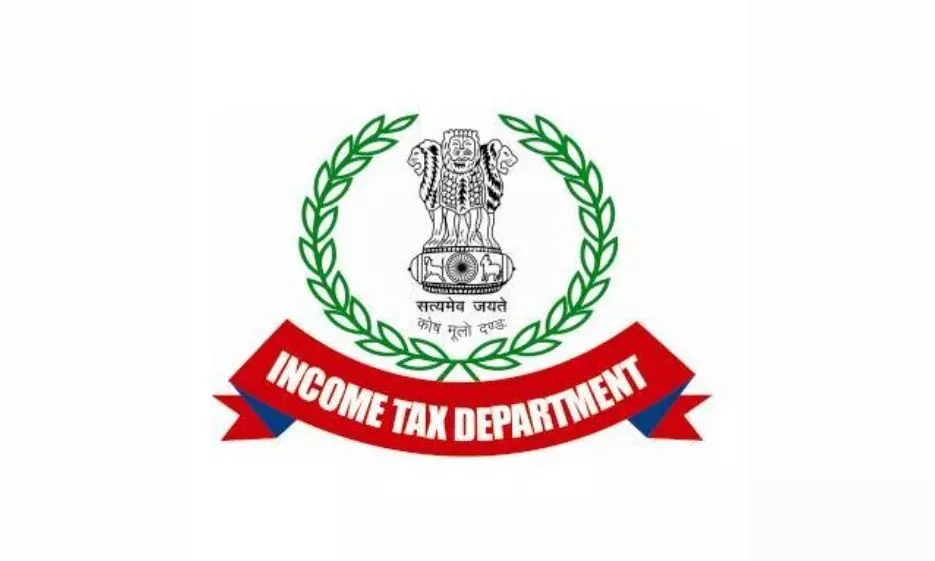Income Tax Dept Releases ITR-2 and ITR-3 Excel Utilities for AY 2025–26
In a move that underscores India’s commitment to streamlining tax compliance and empowering taxpayers, the Income Tax Department has officially released the Excel-based utilities for ITR-2 and ITR-3 for Assessment Year 2025–26. This development is not just a routine annual update—it’s a carefully calibrated technological intervention aimed at increasing accessibility, reducing manual errors, and enabling greater compliance among professionals, businesses, and individual taxpayers.
Income Tax Return (ITR) forms are central to India’s direct tax framework. While the majority of salaried individuals typically file using ITR-1 or ITR-4, those with complex income sources such as capital gains, foreign assets, multiple properties, business income, or partnership earnings require more robust forms—specifically ITR-2 and ITR-3. The release of Excel utilities for these forms is a significant milestone in India’s evolving e-filing ecosystem.
This article series provides a detailed, structured, and professionally grounded breakdown of everything this update entails—technical nuances, form features, eligibility clarifications, compliance implications, usability experience, and expert opinions. In Part 1, we begin by understanding the purpose and significance of Excel utilities, the policy backdrop for their release, and what this move means for India’s mid- to high-income taxpayer base.
Understanding Excel Utilities: A Quick Primer
Before diving into the specificities of ITR-2 and ITR-3 for AY 2025–26, it’s important to clarify what the Excel utility actually is.
An Excel utility is an offline return preparation tool released by the Income Tax Department. It enables taxpayers to fill out, compute, validate, and save their income tax return forms in a structured spreadsheet format. Once completed, the utility generates an XML file, which can then be uploaded to the e-filing portal. While the department has also rolled out Java utilities and a fully online e-filing interface, Excel utilities remain preferred among chartered accountants, tax consultants, and financially literate individuals, thanks to their familiarity and robust offline control.
The utility contains data validation checks, auto-calculation formulas, drop-down lists for sections and codes, and supports import/export of pre-filled data, which ensures greater accuracy and less room for manual error.
Why AY 2025–26 Is Different: Timeliness and Tech Integration
Unlike previous years when utility updates arrived later in the financial cycle, the release of ITR-2 and ITR-3 utilities for AY 2025–26 has come well in advance, offering taxpayers ample time to assess, consult, prepare, and file. This timely rollout aligns with the government’s broader Digital India and Ease of Doing Business initiatives, where tax administration is not just a legal formality, but a digital service.
The proactive release also complements the rising push for real-time data transparency, seamless cross-verification with GST data, mutual fund transactions, stock exchanges, and foreign asset disclosures. With PAN and Aadhaar now fully linked, and the e-filing portal integrated with financial statement repositories, the expectation from taxpayers is higher transparency and better accuracy—something that Excel utilities can assist in achieving.
Who Should Use It and Why It Matters
ITR-2 is meant for individuals and Hindu Undivided Families (HUFs) who do not have income from business or profession, but have:
- Income from salary/pension
- Income from more than one house property
- Capital gains (short-term and long-term)
- Income from foreign assets
- Dividend income exceeding threshold under Section 115BBDA
- Agricultural income exceeding ₹5,000
- Income of a spouse or minor child clubbed under Sections 64(1)(A) or 64(1)(B)
The AY 2025–26 version of the ITR-2 utility reflects several minor but impactful changes from previous years. These include updated capital gains schedules, revised Schedule FA (Foreign Assets), and better integration with Form 26AS and AIS (Annual Information Statement).
One of the highlights of the latest Excel utility is its ability to auto-populate values based on imported data from the e-filing portal. If a taxpayer has already logged in to the portal and accessed pre-filled data, that data can now be downloaded and seamlessly fed into the utility. This reduces duplication, increases accuracy, and speeds up return preparation significantly.
Tailored for Business and Professional Income
ITR-3 is meant for individuals and HUFs having income from proprietary business or profession. It also includes income under the heads:
- Capital gains
- House property
- Other sources, including interest, dividends, winnings from lottery, etc.
- Income from foreign assets
- Income from partnership firm (though not from a separate legal business entity)
ITR-3 is often used by chartered accountants, doctors, lawyers, consultants, freelancers, stock traders, and other professionals, many of whom maintain books of accounts under Section 44AA and audit requirements under Section 44AB.
The Excel utility for ITR-3 (AY 2025–26) supports robust schedule-wise data entry, including:
- Profit & Loss account (Schedule P&L)
- Balance Sheet (Schedule BP)
- Audit information and clause-wise reporting under 3CD
- Depreciation calculation as per Income Tax Rules
- Interest disallowance under Section 40A(2)(b)
- Compliance with Section 115BAC (new regime) and its opt-in/opt-out rules
The structured nature of the utility ensures that no required field is left blank, and that cross-verification of totals happens in real-time before submission.
Ease of Filing for Tax Professionals and High-Net-Worth Individuals
While many salaried individuals prefer the simple online mode for filing ITR-1 or ITR-4, those who fall into higher tax brackets or manage diverse financial portfolios (real estate, equity investments, business ventures, ESOPs, foreign income, crypto, etc.) often require assistance from tax consultants.
For these stakeholders, the Excel utility offers several advantages:
- Offline flexibility: Work without internet interruptions
- Advanced features: Control over schedules, schedules for depreciation and losses
- Version stability: Fewer errors compared to web-based updates
- Template consistency: Professionals can train juniors using Excel-based models
- Portability: Returns can be reviewed, backed up, or mirrored across multiple systems securely
Additionally, many CAs maintain client master sheets and batch tools that allow bulk processing of returns using Excel—a workflow not possible with the web portal interface alone.
Foundation for Transparent Compliance
The early release of ITR-2 and ITR-3 Excel utilities for AY 2025–26 marks a foundational moment for India’s tax compliance regime. It reflects a government intent on merging technological tools with regulatory expectation, while also keeping the diverse profile of Indian taxpayers in mind. These utilities are not mere forms—they are instruments that structure financial transparency, legal accountability, and data accuracy in a rapidly digitizing economy.
Dissecting the Changes: What’s New in ITR-2 and ITR-3 for AY 2025–26
Every assessment year brings with it updates to tax return forms that reflect changing financial disclosure norms, policy shifts, amendments to the Income Tax Act, and judicial clarifications. The release of ITR-2 and ITR-3 Excel utilities for Assessment Year (AY) 2025–26 is no exception. While the overarching structure of the forms remains familiar to seasoned taxpayers, several important revisions have been introduced in the current year—some minor but technical, others quite significant in their implications.
In this part of the article, we undertake a detailed breakdown of these changes, section by section, along with contextual explanations of what they mean for taxpayers, consultants, and financial institutions. The intention is not just to list updates but to interpret their purpose in terms of enforcement, transparency, and revenue optimization.

Schedule FA (Foreign Assets): Expanded and Aligned with Global Compliance Norms
One of the most important updates in both ITR-2 and ITR-3 for AY 2025–26 is the enhanced detail requirement under Schedule FA, which mandates disclosure of foreign assets and income derived from them.
What’s changed:
- Granular categorization of asset classes: Taxpayers must now specify the nature of foreign financial interest—whether it is a foreign bank account, equity holding, debt instrument, trust interest, or digital asset.
- Additional columns for ownership structure: Taxpayers are now asked to indicate if the foreign asset is held in a capacity other than direct ownership, e.g., as a trustee, nominee, or beneficiary.
- Country-by-country reporting clarity: Disclosure of the jurisdiction of the asset, income received, and whether it has been repatriated or retained abroad is now mandatory.
Why it matters:
This change is in alignment with India’s commitment under the OECD Common Reporting Standard (CRS) and FATCA agreements, which facilitate automatic information exchange between countries. For taxpayers, it underscores the need to ensure full and transparent disclosure of overseas holdings, particularly Non-Resident Indians (NRIs) and residents with dual citizenship or offshore investments.
Capital Gains Schedule: Better Asset Classification and Computation Logic
Capital gains are a key income stream for ITR-2 and ITR-3 users. In AY 2025–26, the Capital Gains Schedule has been improved for precision and clarity.
Key enhancements:
- Distinct rows for each asset type: Equity, mutual funds, property, unlisted shares, REITs, and digital assets now have their own reporting rows.
- Indexed cost calculations: The utility now contains inbuilt functionality to compute indexed cost of acquisition using official CII (Cost Inflation Index) tables.
- Segregated reporting of long-term and short-term gains for each asset class, along with applicable Sections (112A, 111A, etc.).
Why it matters:
This not only simplifies compliance for taxpayers but also enables the ITD to cross-match returns with transaction records from stock exchanges, registrars, and depositories. It also provides better enforcement against underreporting of gains from crypto, unlisted equity, and offshore assets.
Schedule VDA (Virtual Digital Assets): Mandatory for All with Crypto Activity
Introduced initially in AY 2023–24, the Virtual Digital Assets (VDA) reporting section has now been made more detailed and mandatory in AY 2025–26 for all taxpayers who have purchased, sold, or received digital assets.
Key changes:
- Separate disclosure for each VDA transaction (Bitcoin, Ethereum, NFTs, etc.).
- Fields for date of acquisition, date of transfer, sale value, cost of acquisition, and tax deducted at source (TDS) under Section 194S.
- Disclosure of platform (Indian or foreign exchange) and wallet location.
Why it matters:
This follows the government’s clear stance on regulating the crypto economy. Taxpayers are now expected to provide a full audit trail of digital asset transactions, even if no gain or loss occurred. The system is designed to plug valuation mismatches and ensure correct TDS compliance.
Section 115BAC Regime Selection: Simplified Opt-In/Opt-Out Logic
Taxpayers now have more clarity regarding the new tax regime under Section 115BAC. The updated Excel utility includes:
- A checkbox for opt-in or opt-out status, based on employment type (salaried/professional/business).
- Warning prompts if a taxpayer opts in without satisfying eligibility (e.g., claiming ineligible deductions).
- Auto-blocking of standard exemptions and deductions not allowed under the new regime.
Why it matters:
The Income Tax Department is attempting to simplify compliance around the dual tax regime system. Clear opt-in/opt-out flags in the utility will reduce cases of invalid returns, mismatched 26AS claims, and wrong refund requests.
Presumptive Income Schedule Changes: Section 44ADA and 44AD Adjustments
For small businesses and professionals filing under presumptive schemes, there have been updates in:
- Gross receipt thresholds: The utility has revised thresholds in accordance with Budget 2024 announcements.
- Separate reporting of digital vs. cash receipts: To encourage digital payments and discourage cash-based income declaration.
- Fields added for Section 44AD(4) and 44AD(5) condition violations and re-entry clauses.
Why it matters:
Presumptive taxation is prone to misuse. The refined reporting structure gives the ITD better granularity to distinguish genuine filers from evaders, especially among freelancers and gig workers.
Audit Requirements and Form 3CD Mapping
In ITR-3, audit details are now:
- Integrated with Form 3CD clauses, especially for turnover, disallowance of expenses, TDS compliance, and transfer pricing.
- Linked to DSC (Digital Signature Certificate) mapping for audit signature.
- Have in-built alerts for failure to submit audit reports by the due date.
Why it matters:
It improves coordination between the taxpayer’s filing and the CA’s audit certification, reducing the risk of disjointed filings or backdated audits.
Enhanced Pre-Fill Capability and Import Logic
The Excel utilities now allow:
- Import of pre-filled JSON files downloaded from the e-filing portal.
- Retention of prior year’s data (ITR-V acknowledgment number, refund claim history, etc.).
- Better import mapping for bank accounts, demat details, and PAN-Aadhaar linkage status.
Why it matters:
This reduces data entry workload, minimizes risk of typos, and shortens return preparation time, especially for CAs handling multiple clients.
A Blueprint for Better Transparency
The updates in ITR-2 and ITR-3 for AY 2025–26 reflect India’s maturing approach to income tax governance—one that prioritizes data integrity, global compliance norms, and citizen-friendly structuring. These revisions aren’t just tweaks—they’re part of a larger effort to make tax reporting more predictive, traceable, and equitable.
Taxpayer Profiles in Focus: How the New Utilities Impact Real People
With the release of updated Excel utilities for ITR-2 and ITR-3 for Assessment Year 2025–26, India’s tax system takes another step toward dynamic, real-time, and data-integrated compliance. But what do these changes mean for the people who actually use these forms? Taxation is not only a legal obligation but also a deeply personal experience—one that touches professionals, entrepreneurs, NRIs, investors, and independent earners in distinct ways.
In this section, we move away from abstract compliance frameworks and into the real lives of taxpayers. We will analyze how the updated utilities impact different income categories, lifestyle types, professions, and tax behaviors. From salaried individuals with foreign investments to doctors running proprietary clinics, from gig-economy freelancers to NRIs returning home, the effects of the revised ITR-2 and ITR-3 are as diverse as India’s economic mosaic.
Salaried Individuals with Capital Gains and Multiple Properties
Use case: Urban professionals with high-paying jobs, who earn a salary but also have mutual fund capital gains, equity market transactions, and often rental income from multiple homes.
Relevant Form: ITR-2
Impact of AY 2025–26 updates:
- Capital Gains module now offers better clarity for classifying long-term vs short-term transactions in both direct stocks and mutual funds.
- Schedule HP (House Property) allows declaration of income from more than one self-occupied or let-out property. Interest on housing loan is easily computed.
- Auto-populated dividend entries are now cross-verified with Form 26AS and AIS, which ensures accuracy but also leaves less room for estimation.
Taxpayer reaction:
For this segment, the changes are welcome. They bring structural clarity and reduce reliance on consultants for basic data entry. However, some complexity in capital gains schedules may still require CA review to optimize taxation and loss carry-forward rules.
Freelancers and Consultants with Presumptive Income
Use case: Self-employed IT professionals, graphic designers, marketing consultants, and other gig economy workers earning income under Section 44ADA (presumptive taxation for professionals).
Relevant Form: ITR-3
Impact of AY 2025–26 updates:
- New structure separates digital vs. cash receipts, promoting transparency and rewarding digital payment adoption.
- Prompt alerts for violations under Section 44AD(4)/44ADA(4) now inform users if they’ve exited the presumptive scheme and need to stay out for five years.
- Simplified Schedule BP (Business & Profession) makes it easier to declare gross receipts and net profit.
Taxpayer reaction:
This segment appreciates the improved utility interface but remains concerned about audit triggers and scrutiny. Many freelancers now err on the side of caution and consult tax professionals despite the simplified tools.

Doctors, Lawyers, Architects, and Other Professionals with Books of Accounts
Use case: Professionals with higher income levels who are mandated to maintain books of accounts under Section 44AA, often falling under audit requirements due to high turnover.
Relevant Form: ITR-3
Impact of AY 2025–26 updates:
- Utility integrates audit-specific clauses, linking with Form 3CD, which saves time during coordination with Chartered Accountants.
- Depreciation schedules for professional assets (clinic equipment, laptops, office furniture) are now easier to compute and track year-over-year.
- Section 115BAC option is prominently flagged, with system-driven checks on deduction eligibility.
Taxpayer reaction:
This group sees the utility as a pre-audit compliance tool, reducing risk of errors. However, professionals still rely heavily on CAs due to the volume of entries and sensitivity of audit documentation.
NRIs and Resident Indians with Foreign Assets or Income
Use case: Indian citizens living abroad or domestic individuals with foreign bank accounts, equity holdings, ESOPs from multinational employers, or foreign real estate.
Relevant Form: ITR-2 or ITR-3, depending on business/professional income
Impact of AY 2025–26 updates:
- Schedule FA (Foreign Assets) has become more granular, requiring explicit mention of nature, location, ownership structure, and repatriation details.
- For ESOPs from foreign companies, Schedule CG (Capital Gains) is adjusted to reflect fair market value and conversion-related gains.
- Disclosure of foreign tax credit (FTC) under DTAA provisions now supports import of foreign tax payment documents.
Taxpayer reaction:
NRIs and those with overseas assets are under increased compliance pressure. Even minor discrepancies in disclosure can attract notices. For them, the Excel utility is a useful tracker but only part of a larger compliance strategy involving legal and financial advisers.
Small Business Owners with Mixed Income Sources
Use case: Proprietors of general stores, tuition centers, online sellers, and small traders with income from business, rental, and capital gains sources.
Relevant Form: ITR-3
Impact of AY 2025–26 updates:
- Enhanced Schedule BP allows detailed breakdown of receipts, expenses, and net profit.
- Integration with GSTIN helps match turnover figures with GSTR-3B filings, reducing risk of underreporting.
- Easier reporting of digital transactions and bank accounts.
Taxpayer reaction:
Many in this category still face digital literacy challenges, and prefer to hand over documentation to CAs. However, the Excel utility allows better visibility into their own financial health, acting as a de facto accounting tool.
Stock Market Traders and Short-Term Investors
Use case: Active traders in stocks, derivatives, and mutual funds, whose income falls under capital gains or business income (if frequent trading).
Relevant Form: ITR-3
Impact of AY 2025–26 updates:
- Schedule CG and Schedule P&L now allow segregation of speculative, non-speculative, and capital income.
- Traders using Algo systems or APIs are expected to disclose platforms used, turnover logic, and STT paid.
- New prompts warn users against misclassifying frequent capital gains as investment income.
Taxpayer reaction:
Traders welcome increased transparency, especially those already using audit-ready reporting platforms. However, they remain wary of increased scrutiny and retrospective reclassification by assessing officers.
Start-up Founders and Equity Stakeholders
Use case: Founders, co-founders, angel investors, and ESOP holders in start-ups with equity transactions, capital gains from exit events, and Section 54 exemptions from residential reinvestment.
Relevant Form: ITR-2 or ITR-3
Impact of AY 2025–26 updates:
- Schedule CG now integrates with angel tax sections (Section 56(2)(viib)) for premium equity transactions.
- New fields under capital gains allow declaration of SAFE notes, convertible instruments, and other modern equity instruments.
- Clearer logic for residential reinvestment exemptions under Section 54F, including deadline tracking.
Taxpayer reaction:
Tech founders see the new Excel utilities as helpful, but still complex enough to require expert advice. They appreciate pre-fill features and cross-validation with Form 26AS for equity-related TDS entries.
Complexity Meets Personalization
The upgraded Excel utilities for ITR-2 and ITR-3 are not just technical instruments—they reflect the diverse, dynamic, and increasingly personalized nature of Indian taxpayers. While the software backbone is standardized, the usage is deeply contextual, influenced by income pattern, geography, profession, and financial behavior.
By recognizing the challenges and perspectives of each taxpayer type, the Income Tax Department’s move begins to bridge the gap between regulation and experience, bringing policy closer to people.








